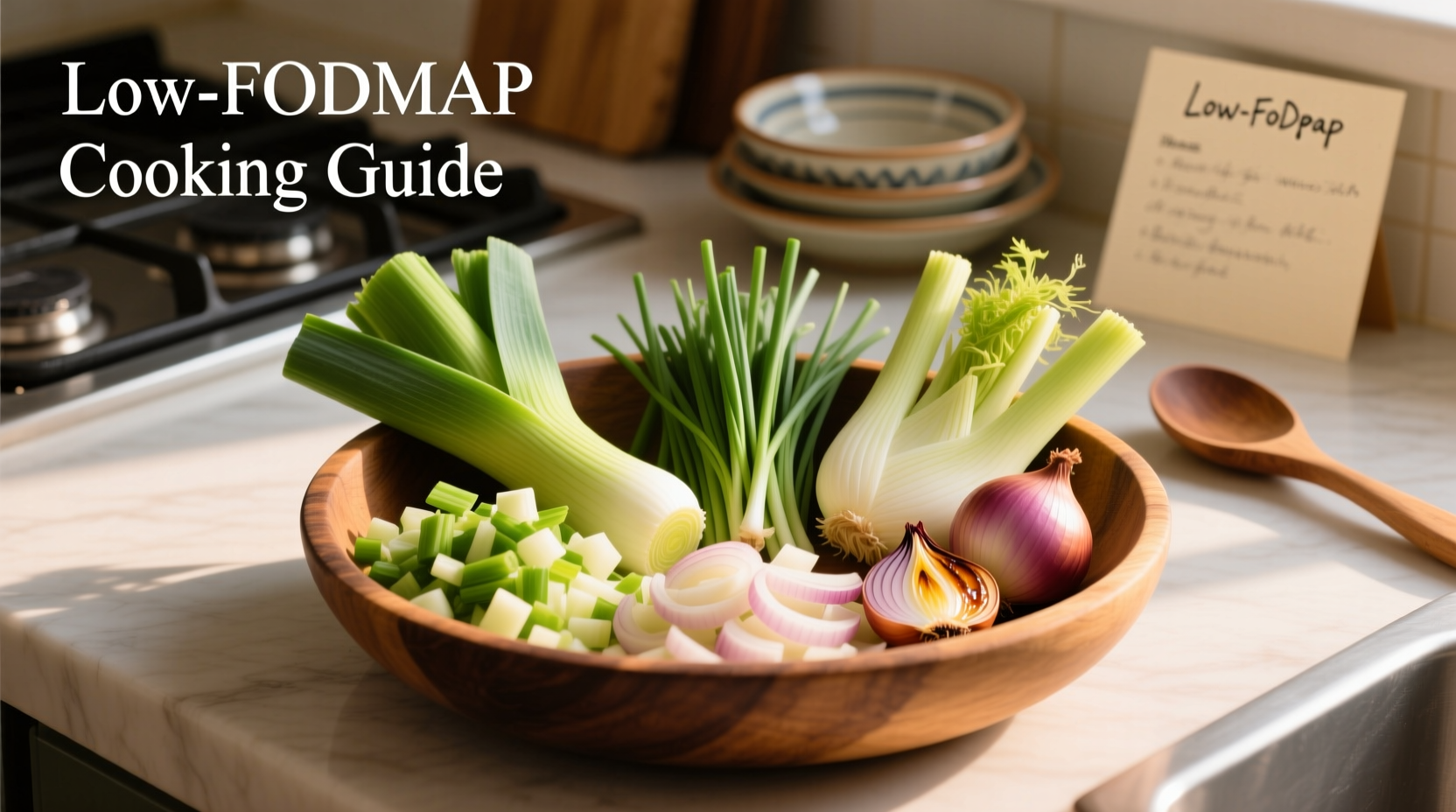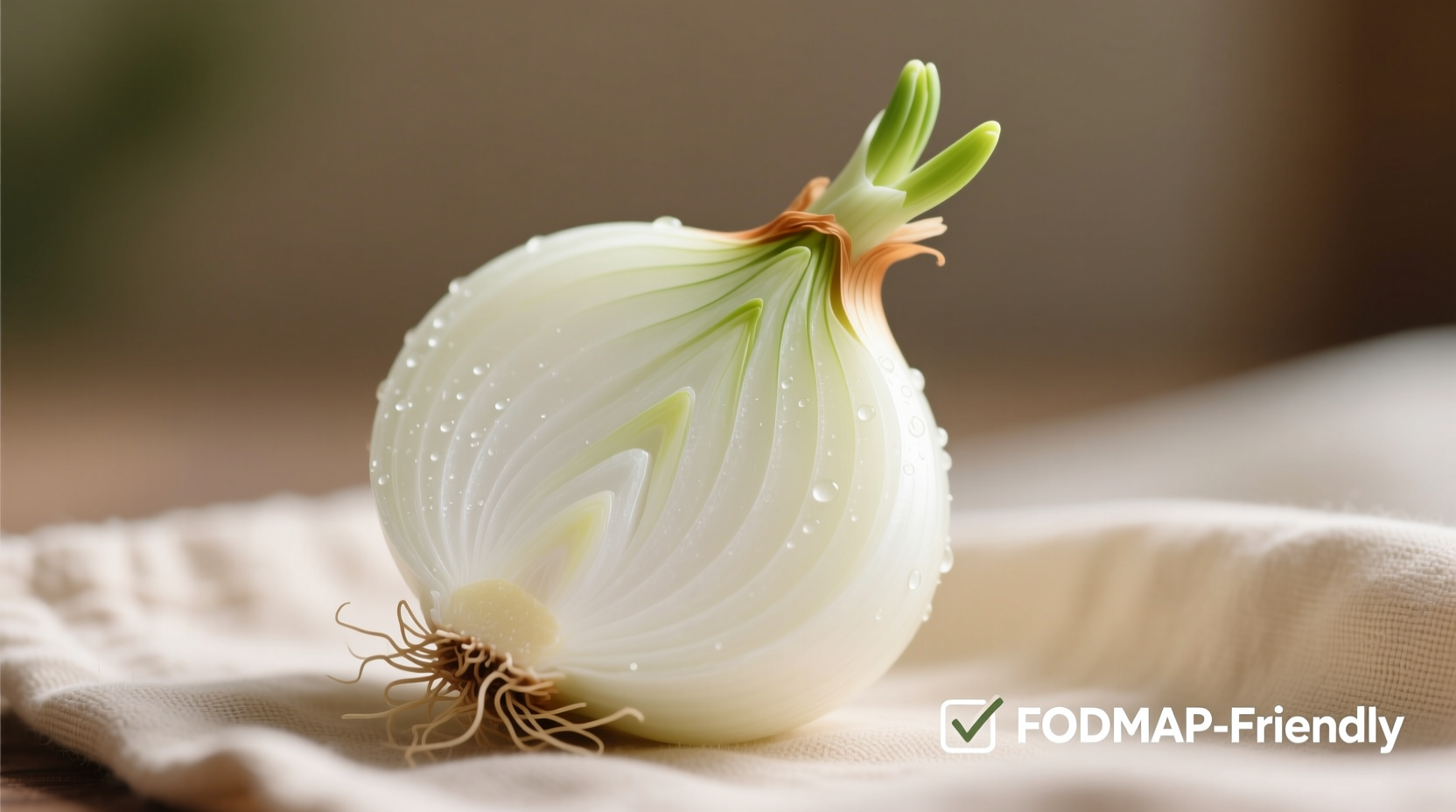Why Onions Challenge Low-FODMAP Dieters
If you're navigating the low-FODMAP diet for IBS or digestive issues, understanding onions' role is critical. Onions contain fructans—short-chain carbohydrates that ferment in the gut, triggering symptoms like bloating, gas, and abdominal pain in sensitive individuals. According to Monash University, the pioneer of FODMAP research, even 14g of raw onion exceeds the recommended fructan threshold for the elimination phase.

Onion Varieties and Their FODMAP Content
Not all onion varieties affect FODMAP tolerance equally. Monash University's certified testing reveals significant differences:
| Onion Type | Low-FODMAP Serving | High-FODMAP Threshold | Monash Certification |
|---|---|---|---|
| Yellow/White Onion | None | 14g raw | High FODMAP |
| Green Onion Tops | 10g (scallion greens) | 38g | Low FODMAP |
| Chives | 3 stalks (5g) | 15g | Low FODMAP |
| Shallot | None | 5g | High FODMAP |
This evidence-based comparison comes directly from Monash University's FODMAP database, the gold standard for FODMAP research. Their laboratory testing uses validated methods to measure specific FODMAP content in foods.
Practical Cooking Alternatives That Deliver Flavor
Replacing onion flavor requires understanding which compounds create its distinctive taste. The key is replicating sulfur compounds without the problematic fructans:
Onion-Infused Oils: The Game Changer
Monash University confirms that onion-infused oils are low-FODMAP because fructans don't transfer to oil during infusion. Here's how to make your own:
- Heat olive oil with chopped onions for 5-10 minutes
- Strain out all solid onion pieces
- Use the oil for sautéing, dressings, or finishing dishes
Low-FODMAP Aromatic Substitutes
These ingredients provide similar flavor foundations without triggering symptoms:
- Carrot and celery (1:1 ratio) for mirepoix replacement
- Green onion tops (up to 10g per serving)
- Chives for finishing dishes
- Asafoetida (hing) - use 1/8 teaspoon for equivalent to 1/2 onion
When Small Onion Amounts Might Be Tolerated
Research shows individual tolerance varies significantly. The Monash FODMAP app indicates that some people tolerate 5-10g of raw onion without symptoms. Consider these context boundaries:
- Meal composition matters: Small onion amounts may be tolerated when combined with other low-FODMAP foods
- Cooking method affects tolerance: Caramelized onions may be better tolerated than raw
- Personal threshold varies: Keep a food diary to identify your specific tolerance level
- Phase of diet matters: During reintroduction, you'll systematically test tolerance
Navigating the Reintroduction Phase Successfully
The reintroduction phase is where you determine your personal onion tolerance. Follow this evidence-based protocol:
- Complete the 4-6 week elimination phase first
- Test onions separately from other FODMAP groups
- Start with 5g of raw onion (about 1 teaspoon)
- Wait 72 hours before increasing to 10g
- Record symptoms using the IBS Severity Scoring System
According to a 2022 study published in the Journal of Gastroenterology and Hepatology, approximately 65% of IBS patients can reintroduce small onion amounts after the elimination phase. This highlights why personalized testing matters more than blanket restrictions.
Avoiding Common Onion-Related Mistakes
Many low-FODMAP dieters encounter these pitfalls:
- Mistaking green onion bulbs for tops: Only the green parts are low-FODMAP
- Using commercial onion powders: These contain concentrated fructans
- Overlooking hidden onion sources: Check sauces, broths, and processed foods
- Assuming all onion varieties behave similarly: Leeks and shallots have different thresholds
Building Flavor Without Compromise
Professional chefs use these techniques to create depth without high-FODMAP ingredients:
- Dry roasting spices like cumin and coriander before adding liquids
- Using mushroom powder for umami depth in sauces
- Adding citrus zest to brighten dishes without acidity
- Layering herbs like thyme and oregano early in cooking
Remember that flavor development happens in stages—don't add all aromatics at once. Start with low-FODMAP bases, build with spices, and finish with fresh herbs for complex flavor profiles.











 浙公网安备
33010002000092号
浙公网安备
33010002000092号 浙B2-20120091-4
浙B2-20120091-4